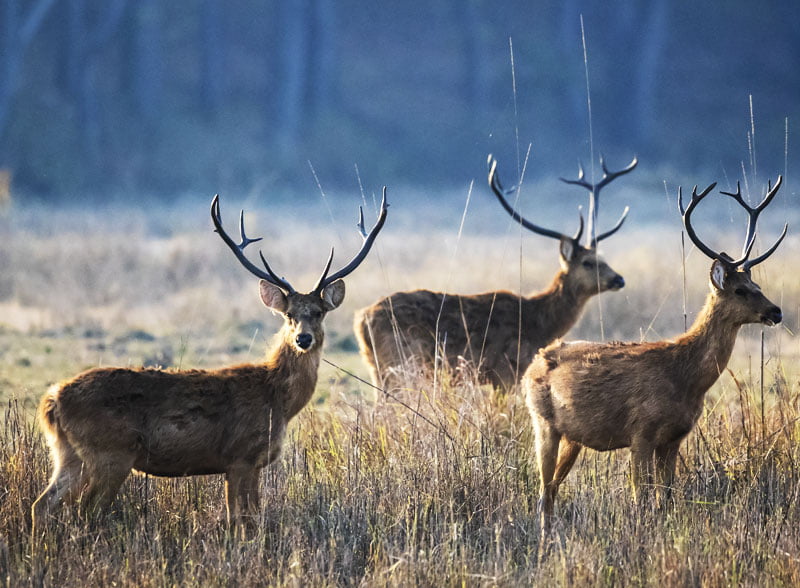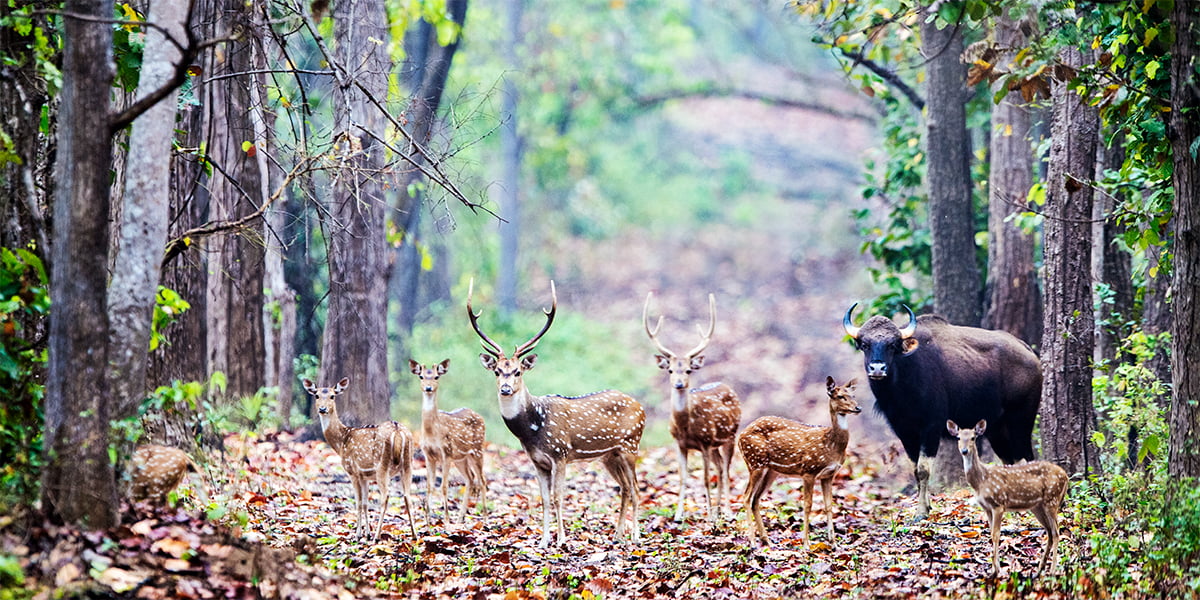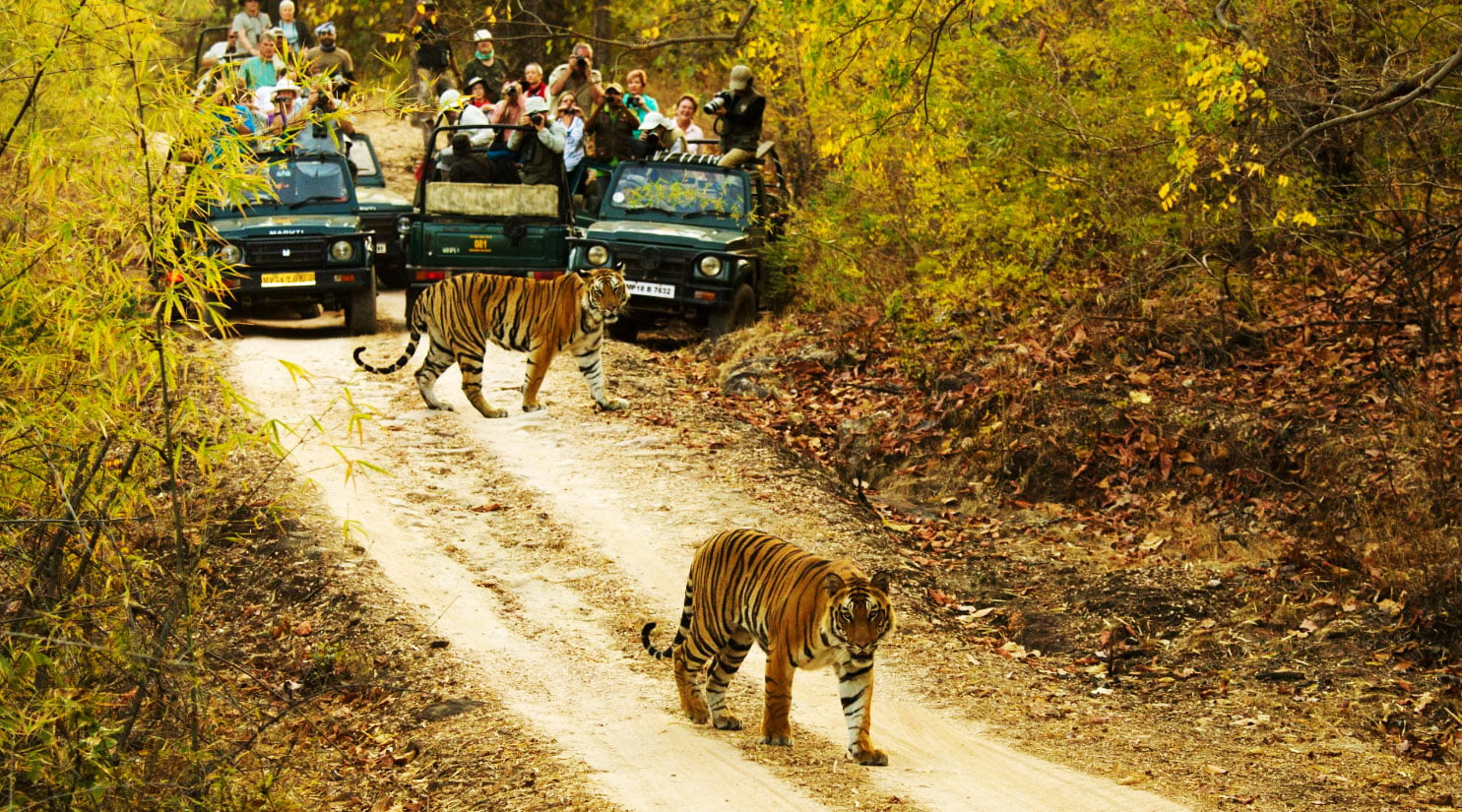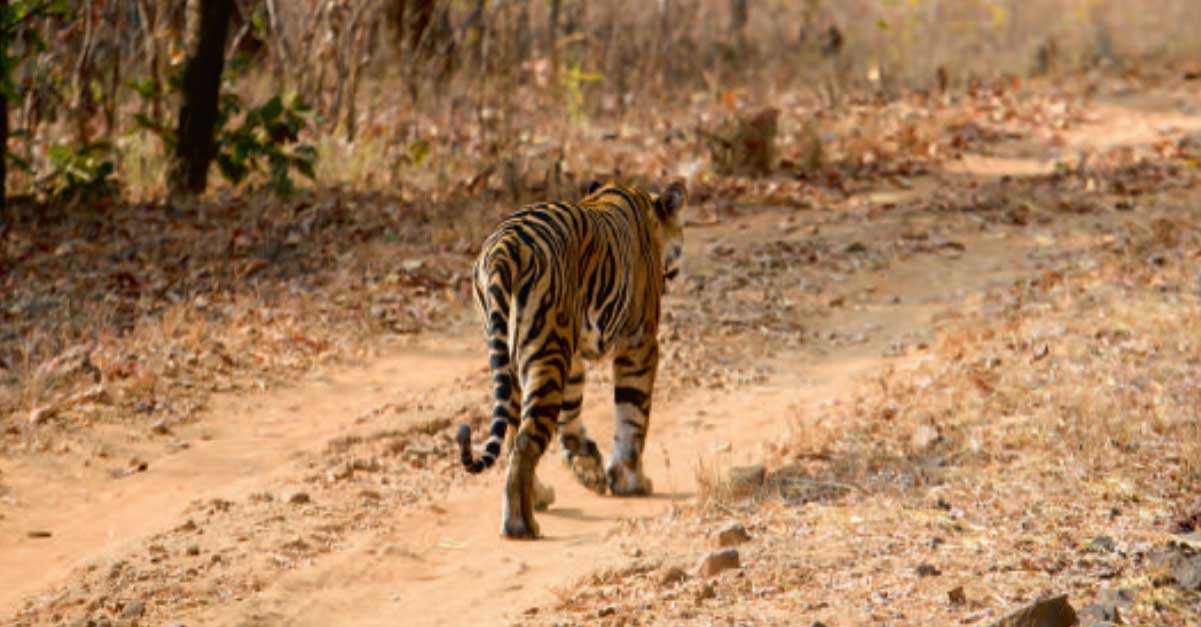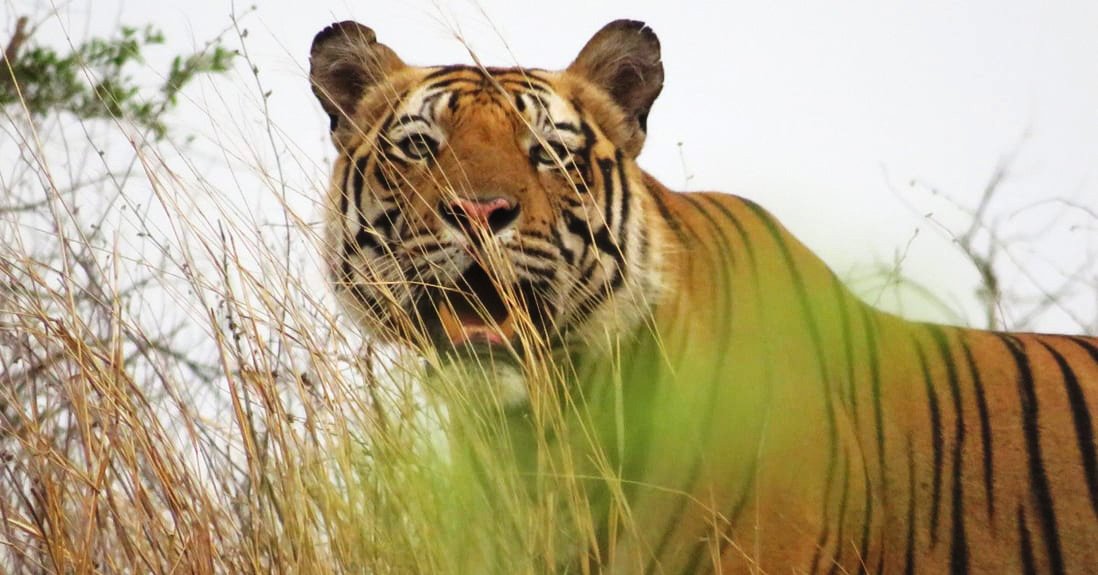FLORA & FAUNA
In his book, Field Days: A Naturalist’s Journey Through South and Southeast Asia, author A. J. T. Johnsingh writes an interesting account of the flora of Kanha, talking in detail about the “intoxicating fragrance of the mahua flowers”, the bright red, scarlet palash or flame-of-the-forest flowers, the jamun trees “clothed in parakeet green foliage” and the “nearly round canopies of mango trees… in light and dark green, golden yellow, and rusty red”. The author’s account of Kanha also mentions “chital and langur feeding on sal and mahua flowers fallen on the ground.”
